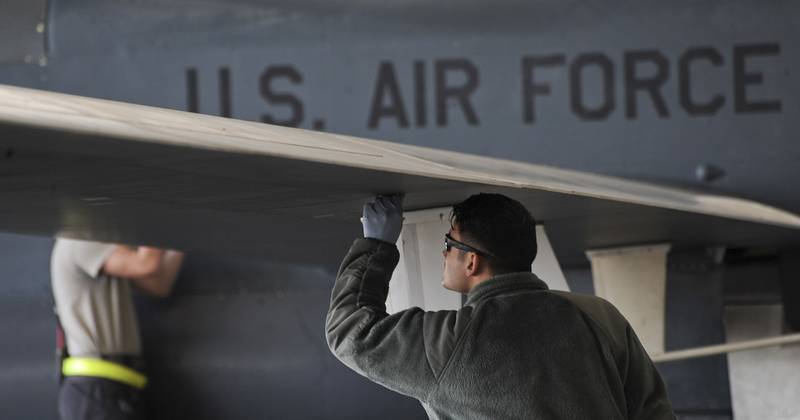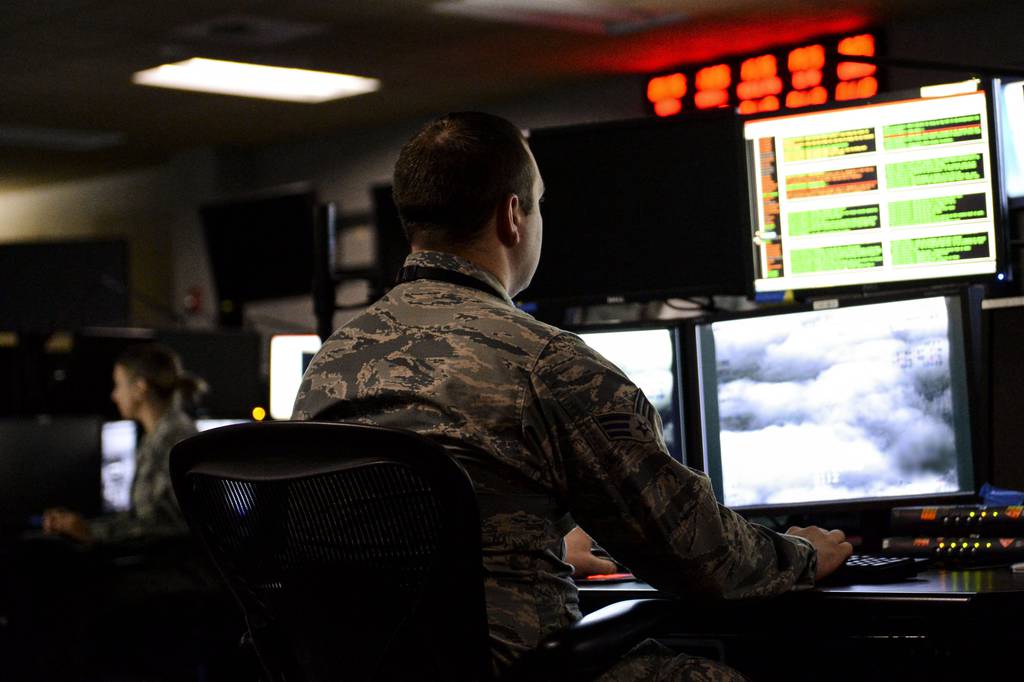One way the Air Force’s new information warfare command is trying to bring together the disparate parts of the organization is through forums where leaders put representatives from different components in the same room.
Sixteenth Air Force/Air Forces Cyber, created in October, combined what was previously known as 24th and 25th Air Force. The move placed cyber, intelligence, surveillance and reconnaissance, electronic warfare and weather capabilities under one commander, serving as the Air Force’s first information warfare entity.
RELATED

With all these new wings and capabilities now under a single unit, they need to understand what everyone is doing and how it can feed together.
“How do we bring forums together where all of our wings that are focused on a problem can be in the same room and we start to build out what things are they all contributing,” Lt. Gen. Timothy Haugh, 16th Air Force’s commander, told a webcast hosted by the Mitchell Institute. “Then taking it to the next layer, so all the weapons and tactics teams are talking. That simple act of creating a forum was built largely on our component responsibilities. We have very good forums … for how do we support and produce cyber outcomes. We expanded that forum into an information warfare environment.”
Some of this integration is already taking hold. Haugh explained he received a positive update earlier this month about how one meeting had led to fewer stovepipes and more data sharing.
In addition, he said he’d like to see more components share intelligence as a way to enable others within the enterprise. For example, if a portion of the ISR enterprise, be it analysis or exploitation, in support of Air Forces Africa, discovers a Russian private military corporation conducting malign activities in Africa, they can pass that to the cyber enterprise to potentially pursue the adversary.
Then the cyber element can feed their information or operation back to the ISR enterprise to produce better intelligence for the air component.
“This is where for us, that art is starting to come together. Right now, it’s very manual, and we’re seeing the processes and the data flows start to fall in place that that will become a more automated and routine function that now becomes mutually supportive across our enterprise,” Haugh said.
Mark Pomerleau is a reporter for C4ISRNET, covering information warfare and cyberspace.








